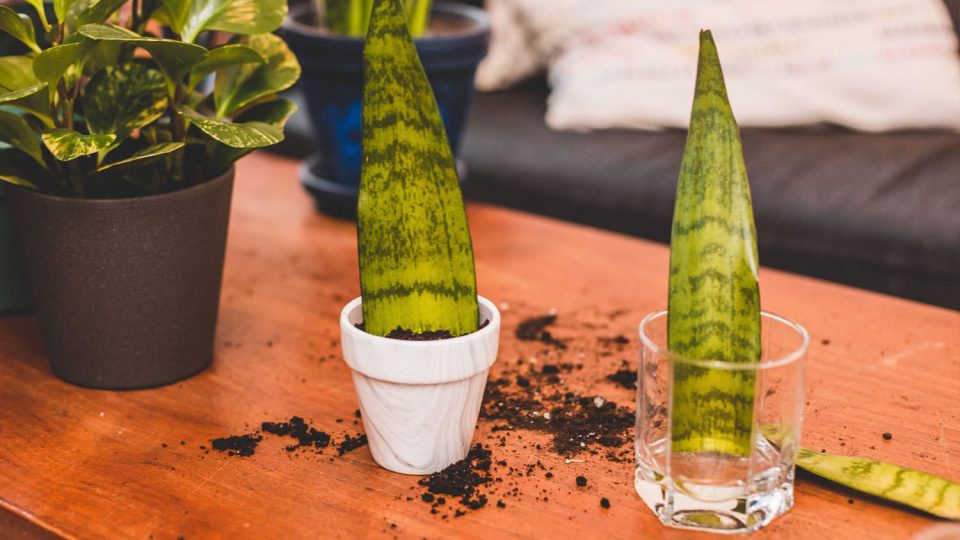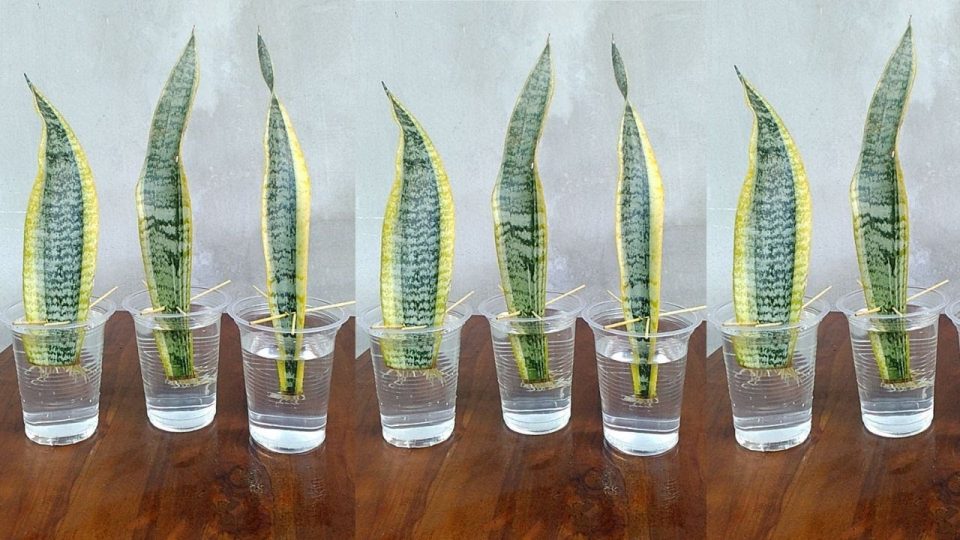Dracaena Trifasciata is the scientific name of snake plant but it is well known for its several other names like the mother-in-law tongue, viper’s bowstring hemp, or Devil’s Tongue.
The plant is a member of the Asparagaceae family and belongs to the West Africa region. If you have to choose one great plant for your home, the snake plant would be considered one of the best plants due to many reasons. They are very easy to care for and you do not have to worry about how to propagate snake plants as there are several methods to do so.

The plant comes with sword-shaped leaves that are waxy and smooth. The thick leaves have striking dark green foliage and it is one of the easy to grow plants even for novice gardeners. Snake plant is good to clean the air that you breathe and it removes some major toxins as well.
The plant can thrive even if you forget to water it sometimes. Along with all these properties, the propagation process is also very simple and you can multiply snake plants at home and gift them to other people. However, there are different methods of propagation that you can use.
Different ways to Propagate Snake Plant?
1. Snake Plant Propagation in Water
You can easily propagate snake plant in water with leaf cuttings. You just need some healthy leaves to initiate the process. Take a sharp knife or scissors and make a V cut. You need to make sure that you make the cut on the leaf that is closest to the soil.

The propagation depends on how sharply you made the cut and you need to put that cut side into the water for a better possibility of propagation. The rooting starts from the edge of the leaf where you made the cut and you need to dip that side of the leaf in at least 25 per cent of water.
Now, as some of the snake plants have very big leaves, you need a bigger jar to put those leaves. You can even use the rooting hormone when you make the cut to increase the propagation chances. In nearly 3-5 weeks you will start observing that the roots are coming from the bottom and in another 2-3 wells pups should show up. This is the time you put your newly propagated snake plant into favorable soil and under optimum light for better growth.
2. Snake Plant Propagation in Soil

Propagating the snake plant in soil is more accurate and you have to follow some of the same steps as you did when you were propagating the snake plant in water. Take some healthy leaves and make a clean cut with a pair of scissors or with a sharp knife.
Now, you have to let the leaves heal from the cut that you made for 1-2 days until it develops callous. Before planting the leaves you can dip the bottom into rooting hormone to increase propagation chances. Keep in mind which is the bottom side where you made the cut, and put that part into well-drained soil.
Do not let the soil be soggy as it may increase the chances of root rot. Water the soil if you feel the upper surface feels dry and make sure it receives bright indirect light. After some weeks, the plant will start developing roots and pups like it did in the water.
Snake Plant Propagation by Division

The division method refers to a procedure where the root clump of the plant is divided into different plants. Now it can be divided into two, three, or four parts depending on the size and placed in separate pots. When you are following the division method, you keep on root clumps along with the crown to be placed in the other pot. Snake plants can be easily propagated through this procedure.
Take the plant out of the pot and examine where you see the rhizomes in the roots. You may need shears to separate the plant. After observing, make a cut where you will get at least 3 rhizomes and a healthy leaf over it. Once you have done with separation, put the divided portion of the plant into a new pot that has well-drained succulent soil. Water it when you feel the soil is getting dry and put it under bright indirect light. The division method works best if you want your plant to grow exactly like the host plant.
Also read: Snake Plant Benefits and Some Lesser-Known Disadvantages
Key Takeaways
There are chances that even after doing all the right procedures, your propagation process is not a success. However, you can always increase your chances of propagation by looking at some very basic things during the process.
- Make sure that your plant receives bright indirect light every day as low light can slow down the process.
- You may need a pot with a drainage hole at the bottom and a pot that is quite heavy as snake plants grow big.
- Water it only when the soil feels dry as overwatering can cause root rot.
- You need a regular soil mix or soil made by mixing perlite, vermiculite, and coarse sand for better drainage.
These things will increase the chances of propagation for sure. Now you must have got all your answers about how to propagate snake plants and you can follow the best method that works for you.
Also read: Types of Sansevieria (Snake Plant) – Things You Need to Know
FAQs:
Q1: How long does it take to Propagate the Snake Plant?
As they are slow growers, you may have to wait for 6-8 weeks for the roots to come.
Q2: Why does the Snake Plant don’t root sometimes?
Sometimes snake plants do not root because of overwatering that causes root rot and the bacteria or fungus that attacks the root in the soil.
Q3: Which is the fastest method to propagate Snake Plants?
The division method is the fastest method to propagate the snake plant.
